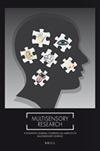哲学多感官知觉专题导论。
IF 1.8
4区 心理学
Q3 BIOPHYSICS
引用次数: 0
摘要
本文章由计算机程序翻译,如有差异,请以英文原文为准。
Introduction to the Special Issue on Multisensory Perception in Philosophy.
European philosophers of the modern period generally acknowledged that the senses are our primary source of knowledge about the contingent states of the world around us. The question of modality was of secondary interest and was very little discussed in this period. Why? Because these philosophers were atomists about sense-perception, an attitude that makes multisensory perception impossible. Let us explain. Atomists hold that all sense-experience is of ‘ideas’ — a somewhat oversimple, but still useful, way to think of these is as images. All ideas are ultimately composed of simple ideas. Atomists hold, moreover, that the intrinsic nature of a simple (or non-composite) idea is fully given by conscious experience of that idea, and in no other way. For example, burnt sienna is a simple idea because it is not composed of other ideas. Nothing about its intrinsic nature can be known except by experiencing it — a colour-blind individual cannot know what it is. It is, moreover, adequately and completely known when it is experienced; there is nothing more to know about it than is given by visual experience of it (see Note 1). Now, on this account of simple ideas, distinctions among them cannot be analysed. For atomists, inter-modal distinctions, like all other distinctions among ideas, are primitive and based in experience. What, for example, is the difference between burnt sienna and the sound of a trumpet playing middle C? All that can be said is that they are experientially different from one
求助全文
通过发布文献求助,成功后即可免费获取论文全文。
去求助
来源期刊

Multisensory Research
BIOPHYSICS-PSYCHOLOGY
CiteScore
3.50
自引率
12.50%
发文量
15
期刊介绍:
Multisensory Research is an interdisciplinary archival journal covering all aspects of multisensory processing including the control of action, cognition and attention. Research using any approach to increase our understanding of multisensory perceptual, behavioural, neural and computational mechanisms is encouraged. Empirical, neurophysiological, psychophysical, brain imaging, clinical, developmental, mathematical and computational analyses are welcome. Research will also be considered covering multisensory applications such as sensory substitution, crossmodal methods for delivering sensory information or multisensory approaches to robotics and engineering. Short communications and technical notes that draw attention to new developments will be included, as will reviews and commentaries on current issues. Special issues dealing with specific topics will be announced from time to time. Multisensory Research is a continuation of Seeing and Perceiving, and of Spatial Vision.
 求助内容:
求助内容: 应助结果提醒方式:
应助结果提醒方式:


